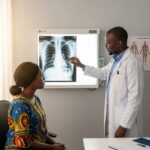South Sudan, the youngest nation in Africa, confronts an array of public health threats ranging from ongoing infectious disease outbreaks to climate-driven emergencies such as floods, drought, and heat waves. As of August 2025, the country was battling active outbreaks of anthrax, cholera, circulating vaccine-derived poliovirus type 2, viral hepatitis E, measles, and mpox, while severe flooding had inundated sixteen health facilities and displaced over 56,000 households—affecting nearly 200,000 people. Persistent challenges including fragile health systems, inadequate infrastructure, and a heavy burden of zoonotic diseases underscore the urgent need for robust preparedness, prevention, and detection capabilities to mitigate these escalating risks.
In 2024, the World Health Organization (WHO) country office, backed by World Bank funding, facilitated a Joint External Evaluation (JEE) to assess South Sudan’s core capacities under the International Health Regulations (IHR 2005). The one-health department coordinated an in-country self-assessment, which was then rigorously peer-reviewed by international experts convened by the WHO Emergencies Hub in Nairobi, Resolve to Save Lives in Cairo, and specialists from multiple African member states. The finalized JEE report, validated through this mechanism, formed the blueprint and baseline for the second-generation National Action Plan for Health Security (NAPHS).
Over a six-month period, representatives from all one-health line ministries, departments, and agencies engaged in an interactive process to craft the 2025–2030 NAPHS. This collaborative effort drew lessons from the first-generation NAPHS, aligned with South Sudan’s strategic aspiration to enhance IHR core capacities over five years, and defined the specific interventions and activities necessary to achieve those objectives.
A robust monitoring and evaluation framework was embedded to track implementation progress. Following a national peer-review and validation in May 2025, the comprehensive, multi-sectoral roadmap was formally adopted, signaling a unified commitment to strengthening the country’s ability to prevent, detect, and respond to health emergencies in harmony with IHR 2005 principles.
With an estimated USD 118 million cost, the NAPHS allocates half of its five-year budget to preparedness and prevention activities, with an additional ten percent dedicated to bolstering surveillance networks and laboratory capacity for timely public health threat detection.
The official launch of the NAPHS 2025–2030 was presided over by the Minister for Cabinet Affairs in the presence of ministers responsible for health, livestock and fisheries, environment and forestry, agriculture and food security, wildlife conservation and tourism, and justice and constitutional affairs. Timed to precede by one month the entry into force of the 2024 amendments to the International Health Regulations in September 2025, the event marked the flag-off for immediate implementation.
Firm dates were set for a resource-mapping workshop in September, an annual operational planning workshop later that month, and completion of an implementation tracker by October 2025.

“ The proposed NAPHS investment is projected to save the Country about 288 million dollars—135 million dollars’ worth of outbreaks prevented, 113 million dollars saved from early outbreak detection, and an additional 40 million dollars in response efficiency and effectiveness ”
Honorable Sarah Cleto Rial
WHO’s country office, supported by the regional office and headquarters, provided critical technical expertise, facilitated mobilization of national and international peer reviewers, and guided the entire development process. The resulting NAPHS is firmly grounded in evidence from the JEE findings, WHO’s Strategic Tool for Assessing Risks (WHO/STAR), the NAPHS toolkit, and a dedicated costing tool. Over eighty experts from human, animal, environmental health, and security sectors were convened to co-create the plan. “With the NAPHS and One Health Strategic Plan, South Sudan government has spoken and set a clear pathway to protect the health of its people, animals, and environment. This achievement is a testament to what strong government leadership, partner collaboration, and WHO technical support can deliver,” affirmed Dr. Humphrey Karamgi, WHO Representative for South Sudan.
By completing its second-generation NAPHS, South Sudan joins Eswatini, Ethiopia, the Republic of South Africa, the United Republic of Tanzania, and Uganda in the continental cohort of nations that have fortified their health security frameworks.
“ South Sudan is the youngest nation but stands tall in accepting challenges and proposals for national development. South Sudan is also aware that it must run if it is going to reach where her sister nations are. In turn, he congratulated the Ministry of Health and the line-ministries for pushing the country to join the East African neighbours in the pride-parade of complete NAPHS ”
Honorable Martin Elia Lomuro

Once fully implemented, the NAPHS is expected to significantly reduce the likelihood and impact of outbreaks and public health events, strengthen national capacities for early detection and prompt response, expand multi-sectoral one-health partnerships, foster an enabling environment and societal
trust in emergency management, establish and maintain core capacities at designated ports of entry, align domestic and external resources for implementation, and institute an effective monitoring and evaluation system for ongoing health security reinforcement.



